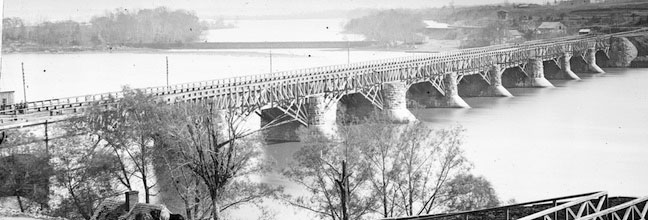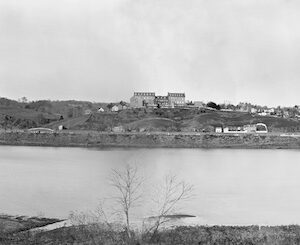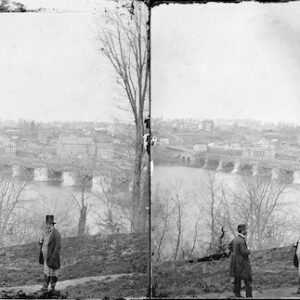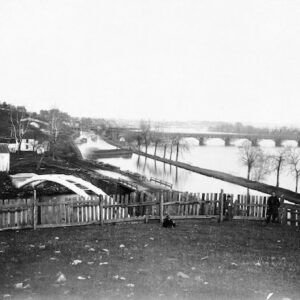Tag: Aqueduct Bridge (Alexandria Canal)
 Wikipedia says: The Aqueduct Bridge (also called the Alexandria Aqueduct) was a bridge between Georgetown, Washington, D.C., and Rosslyn, Virginia. It was built to transport cargo-carrying boats on the Chesapeake and Ohio Canal in Georgetown across the Potomac River to the Alexandria Canal.
Wikipedia says: The Aqueduct Bridge (also called the Alexandria Aqueduct) was a bridge between Georgetown, Washington, D.C., and Rosslyn, Virginia. It was built to transport cargo-carrying boats on the Chesapeake and Ohio Canal in Georgetown across the Potomac River to the Alexandria Canal.
…In 1830, merchants from Alexandria, Virginia, which was still part of the District of Columbia at the time, proposed linking their city to Georgetown to capitalize on the new Chesapeake and Ohio Canal. Congress granted a charter to the Alexandria Canal Company in 1830, and construction soon began on the Aqueduct Bridge that would carry canal boats across the Potomac River and downriver on the south side without unloading in Georgetown. The bridge was designed by Major William Turnbull. Construction of the bridge and Alexandria Canal began in 1833, and both were completed in 1843. To withstand Potomac ice floes, the piers were made of gneiss, with icebreakers made of granite. The water-filled bridge was a weatherproofed-timber, queen-post truss construction. The bridge was 110 feet (33.5 m) wide across the top. It had eight piers, each set on riverbottom bedrock and 7 feet (2.1 m) wide at the top. The third and sixth piers were 16 feet (4.9 m) wide at the top. Each pier was designed so that its top was 30 feet (9.1 m) above the mean high water level. A narrow carriageway ran alongside the bridge. Later, a separate level for pedestrian and carriage traffic was added to the bridge. The tolls from the addition inhibited trade between Georgetown and Virginia, thus benefiting Alexandrian businessmen who retained Virginian trade.
During the American Civil War, the canal was drained to make a roadway for military troops.
In 1866, the Alexandria Canal Company leased the bridge for 99 years to three local businessmen. The existing wooden superstructure, which had decayed, was replaced with Howe trusses. Wooden arches were later added to strengthen the Howe trusses. In 1868, Congress passed legislation requiring the lessees of the bridge to maintain a highway on the bridge. To support this construction, the lessees were authorized to charge a toll. A wooden floor was placed atop the Howe trusses, and wooden trestles built on both ends to provide approaches to the bridge.
Showing all 11 resultsSorted by latest










